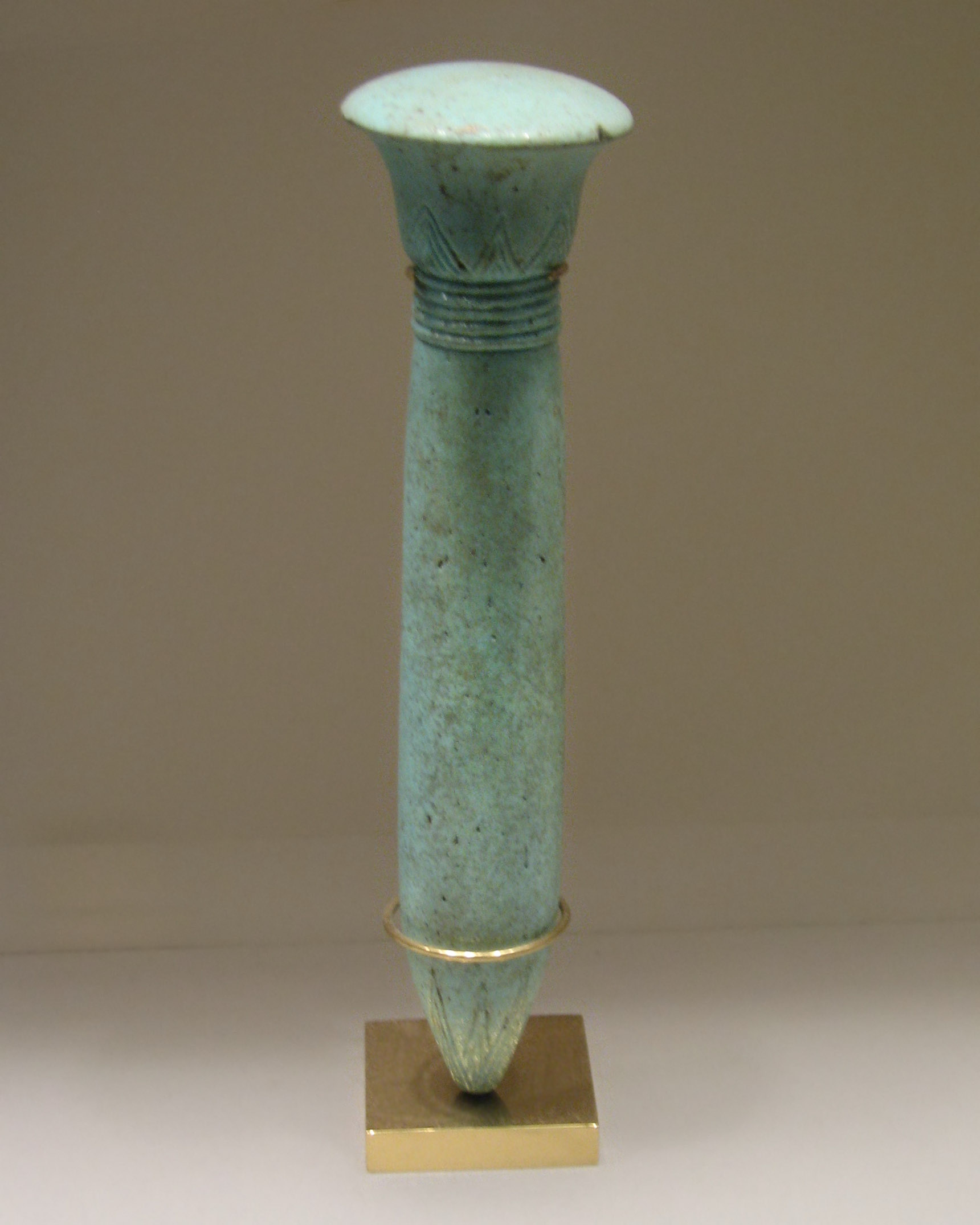
Late Period, Dynasty 26–29, 664–332 BCE
Faience, H. 14 cm (5 1/2 in)
Edward S. Harkness Gift, 1926, MM# 26.7.1036

Late Period, Dynasty 26–29, 664–332 BCE Faience, H. 14 cm (5 1/2 in) Edward S. Harkness Gift, 1926, MM# 26.7.1036 |
|
This is a stylized depiction of the papyrus plant, upon which so much of Egyptian life was dependant.
"The plant was very important in everyday life; it was put to numerous
practical uses from sandal-making and basketry to the construction of river
craft, as the Greek writer Herodotus noted in the fifth century BC. He
mentioned the making of sails and papyrus rope (which was widely used in the
Mediterranean and features in Homer's Odyssey) and he recorded that the
lower part could be eaten, particularily when roasted. This was presumably
the water-logged root, and although there is no ancient Egyptian written
evidence for this, roots have been found in excavation. Surviving examples of
rope, sandals and basketry show the uses of the tougher parts of the plant.
Tomb scenes show men gathering stems, mostly for making boats. A similar
scene occurs on a papyrus from the Late Period alongside other pastoral
activities (BM EA 9961).
"Although the majority of the population would have used the plant only for
these purposes, its most inventive use was as a writing surface - perhaps the
most influential achievement of the ancient Egyptians. The Hymn to the
Inundation, probably composed in the Middle Kingdom, acknowledges the
importance of papyrus in its list of the benefits of the inundation:
'all writings of hieroglyphs
(From _Papyrus_, by R. B. Parkinson, Stephen Quirke, Ute Wartenberg, and Bridget
Leach, page 12)
The authors of _Papyrus_ explain further:
"In the hieroglyphic script a stylized papyrus stem wrote words for 'green'
and 'flourishing' (in Egyptian wadj), and the sign was used as an
amulet that was important enough to merit its own spell in the Book of the
Dead. Wadj-amulets were worn by the living as well as the dead, as recent
excavations by the British Museum at the town sites of Ashmunein and Balamun
have shown. In iconography, the same shape occurs as a sceptre held by
goddesses.
"Because of its height and dense growth in thickets, the plant is a haven for
wildlife, especially birds. The wildlife and the luxurient greenery of the
papyrus marshes made them the Egyptian equivalent of the European pastoral
landscape in art and literature. They also had a religious dimension,
symbolizing the emergence of the land from the primordial swamp, a site of
primeval power." (page 11)
|


